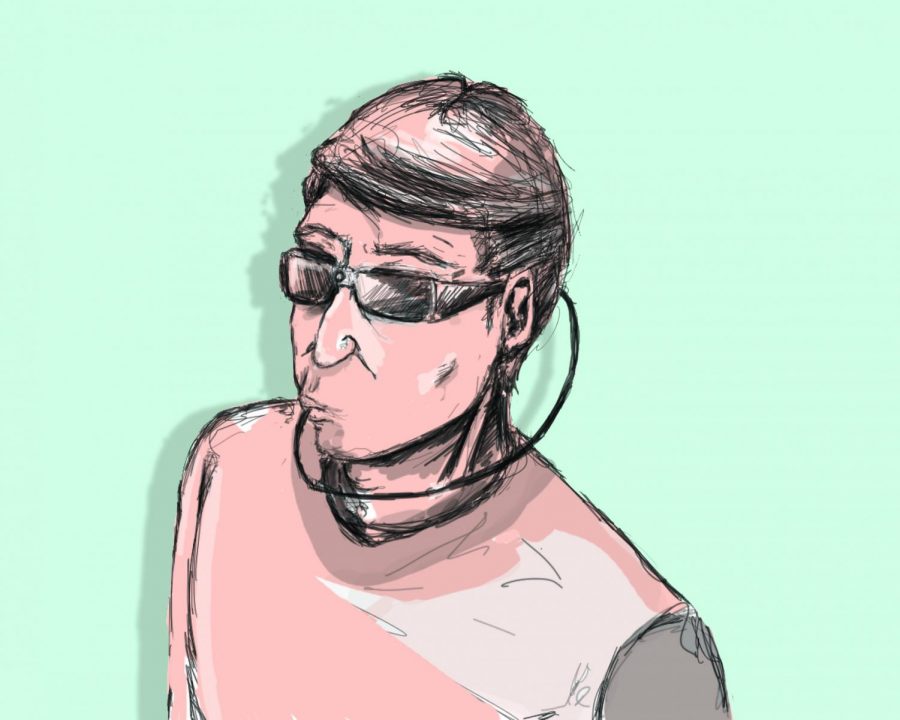Brainport device supplements sensory substitution
Brainport
February 9, 2015
While there are a wide range of devices and systems available for the visually impaired, few are able to replicate vision.
The Brainport device, originally developed in 2007 to help maintain balance, facilitates sensory substitution—the phenomenon of trying to generate the input normally received by a certain sense by tapping into the channel of another, such as braille, which utilizes touch. The Brainport is worn like a pair of glasses with a small camera attached to the bridge. A wire transmits visual input from the camera to a piece that users place on their tongue. The visual input is encoded as a sensory message and sent to the tongue piece, which conveys to electrodes that give the user a perception and understanding of their surroundings.
Patricia Grant, the director of clinical research at Wicab, Inc., Brainport’s developers, said the device is used to help people who are visually impaired or blind identify objects, navigate their environment or spot-read.
“It was developed to augment other assistive devices like the white cane,” Grant said. “It is a device that gives the person more information about their environment. It could be used for navigation, it could be used to identify different objects in front of a person.”
According to Grant, the advantages of the Brainport device are that it does not require surgery and has shown to be effective in trials. The device is currently available in Canada and Europe and is in its final stages of gaining Food and Drug Administration approval before entering the U.S. market. The idea for the Brainport stems from the sensory substitution theories of neuroscientist Paul Bach-y-Rita.
“We do not see with the eyes,” Bach-y-Rita wrote in a 2003 edition of Discover magazine. “The optical image does not go beyond the retina, where it is turned into the spatio-temporal nerves of [impulses] along the optic nerve fibers. The brain then recreates the images from analysis of the patterns.”
The Brainport device’s use of sensory substitution gives users a sense of the world around them, according to University of Pittsburgh Medical Center associate professor Ellen Mitchell.
“It doesn’t give them sight per se,” Mitchell said. “With training and use of the device, it [can] give a representation of what’s going on.”
Mitchell said that while the device cannot restore vision, patients may be able to strengthen their awareness of their surroundings and performance of certain tasks.
“With the right type of contrast, [patients who practice] are able to make out letters on a piece of paper or letters on the board,” Mitchell said. “There was a patient who was able to open her mail and able to know what type of bill had come in the mail. It takes a lot of training and time with the assistive device to get to that point.”
Emilie Gossiaux was hit by a truck while riding her bicycle in New York City in October 2010. She sustained a traumatic head injury that left her blind. She began using the Brainport in 2012 after being recruited for a study of the technology through Lighthouse International, a non-profit organization in New York City that provides a variety of resources to the visually impaired. Gossiaux used the Brainport from July 2012 through the spring of 2014.
“They were doing a study on what people might use it for,” Gossiaux said. “Some people use it for traveling, some use it for playing with their kids, but I use it for drawing.”
A student at the prestigious Cooper Union art college in New York at the time, Gossiaux’s accident left her unable to create art like before. She began producing art again two years after her accident, working primarily with industrial arts, such as ceramics and woodworking. By wearing the Brainport device, Gossiaux was able to utilize some of her former artistic mediums, such as painting and drawing.
“I used either black markers or black India ink,” Gossiaux said. “I would start drawing on the page, but it took a really long time for me to get comfortable using it because it’s not that easy. I had to zoom in really, really close to the marker, like the point tip, in order to watch what I was drawing.”
Gossiaux described the feeling of the electrodes transmitting information as “prickly, like little tiny ant bites.”
The Brainport did not create vivid images for Gossiaux. However, she could make out objects in front of her, such as a door frame or a table. She said it took hours for her to link the information being given to her in her tongue to the blurry images she saw in her mind.
“Sometimes, there would be light and shadow that I can see,” Gossiaux said. “You can’t see colors. It’s not black and white. It’s black and lighter shades of black. It was sort of looking at a screen on a TV that is really flat and you can’t see in three dimensions.”
Gossiaux compared her vision of her drawings to computer pixels.
“It’s like a computer animation and you’re trying to decipher [it] piece by piece,” Gossiaux said.








